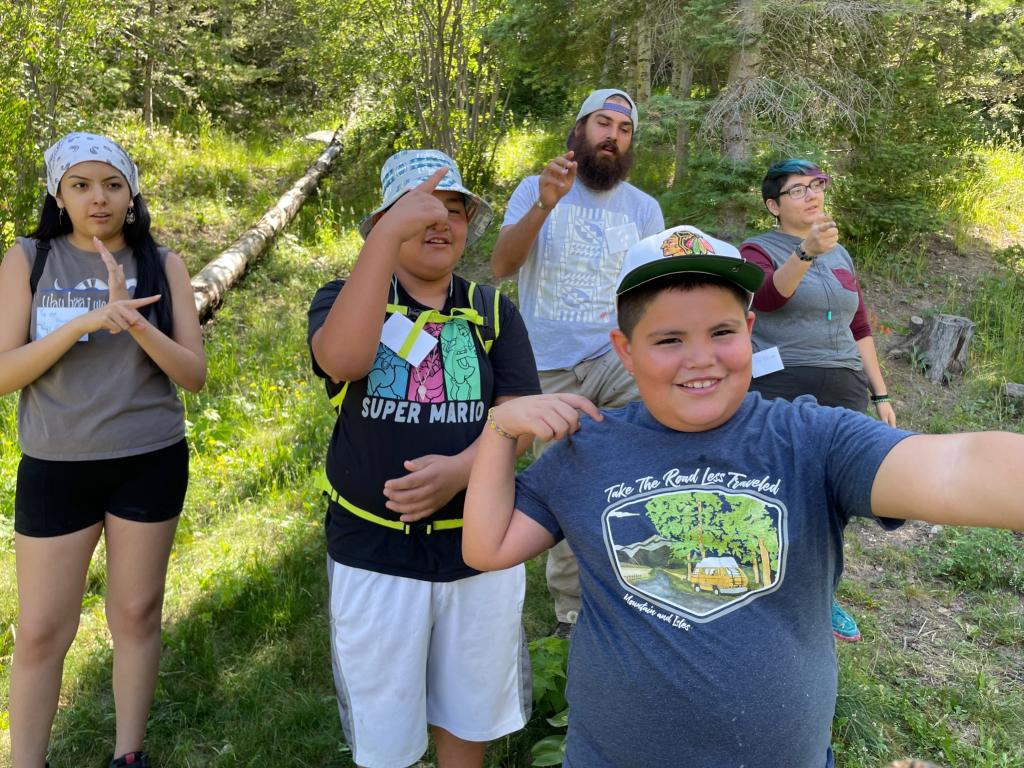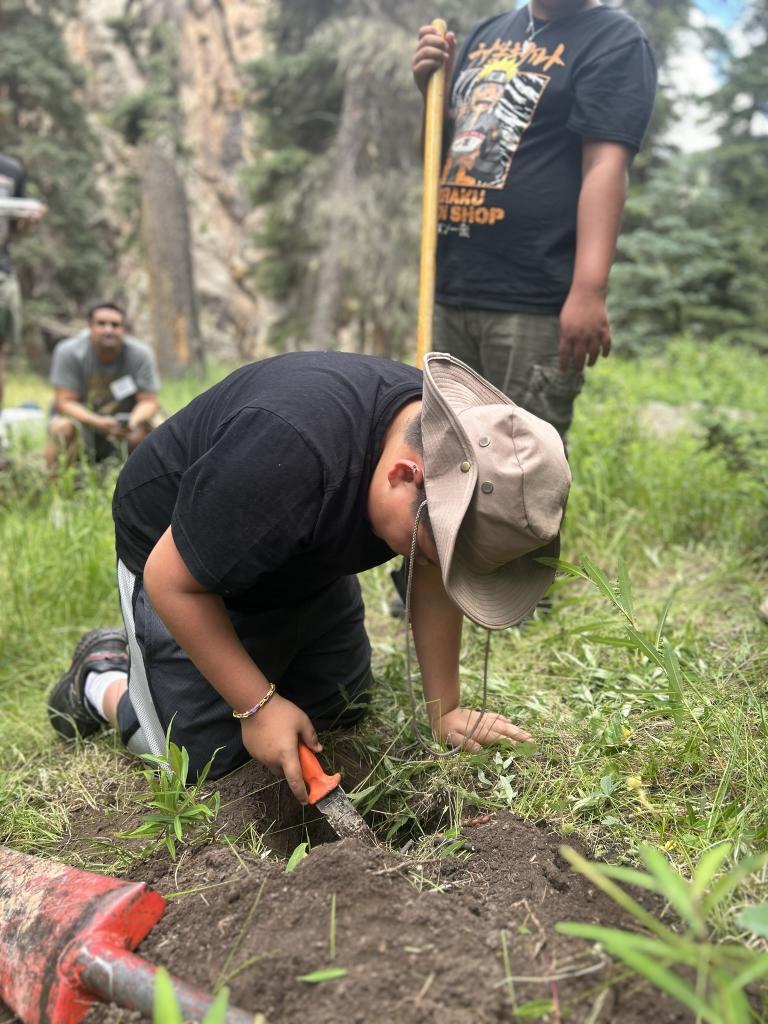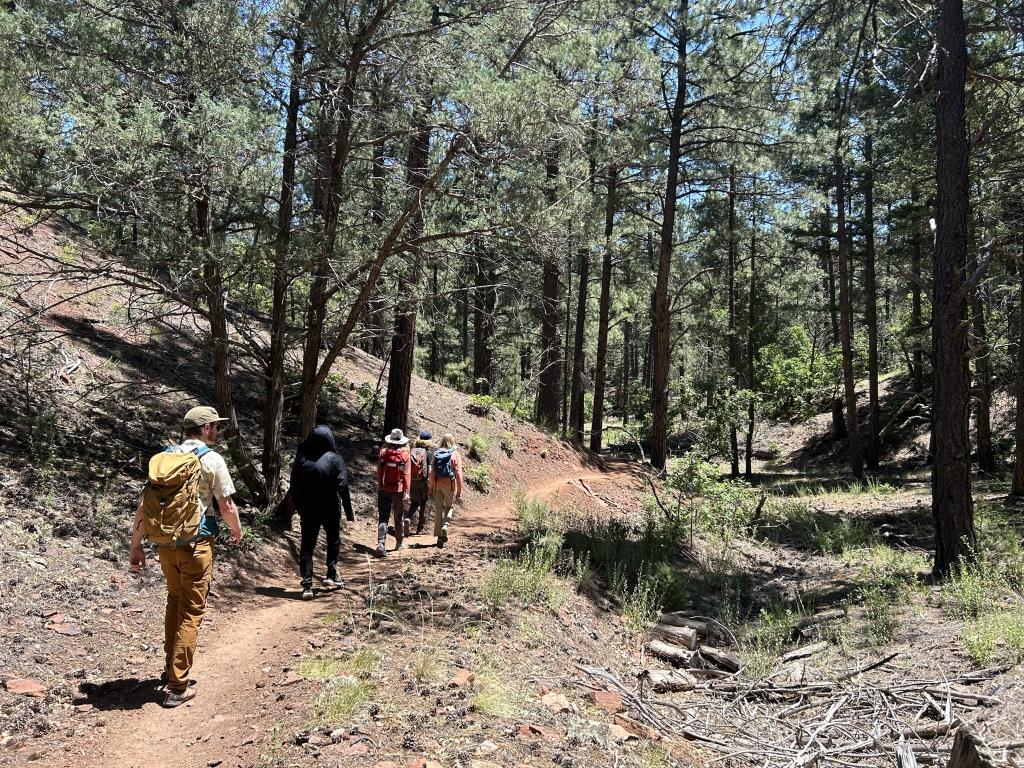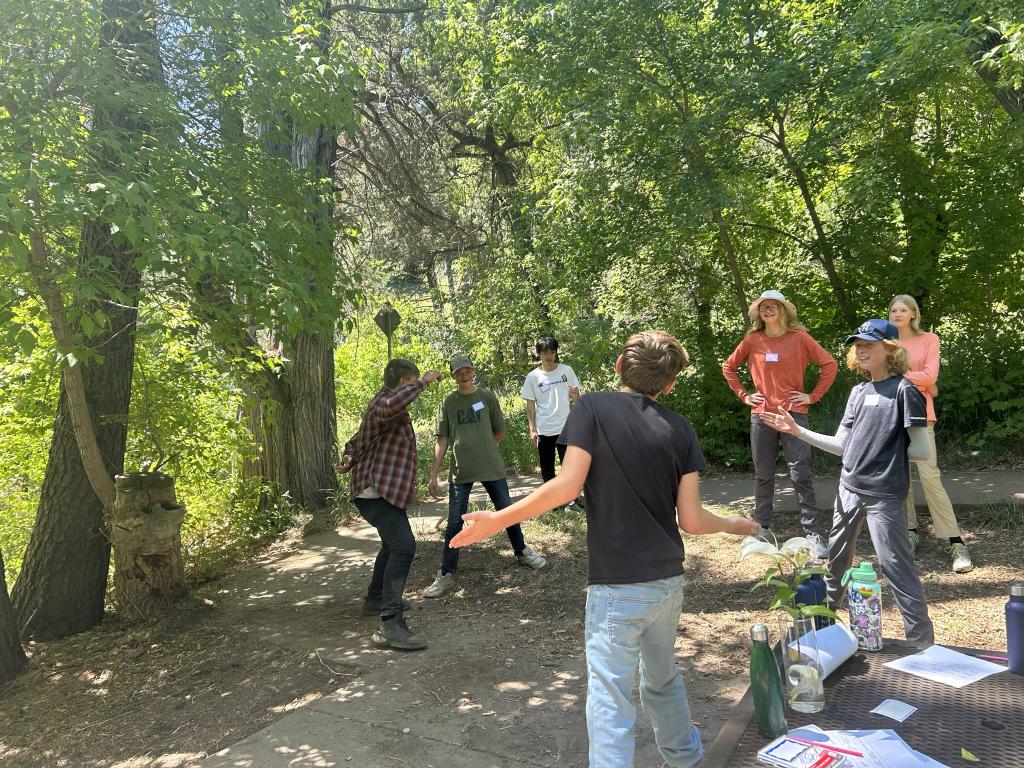By Samuel Villarreal Catanach and María Leonor Rodríguez, October 2023
This year marked the sixth year of our summer educational program, Forest Bound, a native plant immersion and conservation skill-building program that teaches students about native plant species through a botanical, ecological, and cultural lens. Each year, Forest Bound students get to explore the Santa Fe and Cibola National Forests for a whole week. Through this program, we hope to spark their interest in conservation through connections and experiences outside in nature.
This year, we offered two week-long sessions: one in collaboration with the Pueblo of Pojoaque’s Tewa Language Department and the other one in the Cibola National Forest with participants from Albuquerque and surrounding communities. Funding from the U.S. Forest Service enabled our Southwest Office to provide this program free of cost to all participants.
Pondering Plants at P’òsuwäegeh
by Samuel Villarreal Catanach

Language, its connection to land—and participants’ relationship to both—is the name of the game during Toward Mother Earth: Forest Bound at P’òsuwäegeh Owingeh, the expanded name for the program when partnering with the Pueblo of Pojoaque’s Tewa Language Department (TLD). Now in its fourth year, this specialized version of Forest Bound aims to center the intergenerational learning of native plants and the ecosystems situated within the Tewa world (the landscape containing the current and ancestral lands of the six Tewa speaking Pueblos) through a Tewa linguistic and cultural lens. P’òsuwäegeh Owingeh, meaning “Water Drinking Place Village,” is the traditional Tewa name of the Pueblo of Pojoaque, and it is here that the program begins and ends each day. Participants, who are broadly community members from any of the Tewa speaking Pueblos, get up close and personal with the lands their ancestors knew intimately.
This year, among many other activities, we spent time near the Pojoaque Creek, where participants sat with a plant of their choosing. Each participant was asked to take in the details they might otherwise overlook, and share with the group what they noticed about its colors, shapes, textures, and patterns (but no tasting allowed!). We traveled up into the mountains of Jemez and Santa Fe to learn about the properties of soils, and to better understand the pollinators that allow for plant life to continue as it has for millennia. There, we worked to build and to reinforce already existing one rock dams in foothills of the Pueblo of Pojoaque which stave off erosion and assist precious rainwater to seep into the ground. These learnings work to uncover a dimension of the world fundamental to the survival of our species, one that has been largely deactivated due to mass convenience and western value systems.
What we’re really doing is working to decolonize the way participants see and interact with their landscape—so that they, too, can have a relationship with what has permitted us to be and remain Tewa. Through an immersion-based approach, it is the goal of the Tewa Language Department during the program to teach fundamental phrases in the language, such as, “What is this?”, along with various names of plants and their traditional uses, helping to convey the relationships that transcend the human realm and tie all living beings to one another. So, “What is this?” It’s awesomeaceae.


Returning to the Cibola National Forest
by María Leonor Rodríguez

For our second educational session of the summer, we revisited Cibola National Forest near Albuquerque for the first time since 2019, in the hopes of exploring new sites and widening our reach to teens in the area.
We taught in forest sites along the Sandia Crest Scenic Byway. Some of the sites we visited included the Sandia Crest, Cienega Picnic Area, Capulin Springs, Elena Gallegos Open Space and the Ranger Station. Students got the opportunity to engage with and notice changes in plant communities as we ascended the mountain. These changes in the landscapes offered spontaneous learning opportunities, as well as space to generate hypotheses and think critically about our environment. A big highlight of the week were our botany walks and hikes—where teens got to explore the forest in a more unstructured way and learn about the native plants in the area. During these walks, students also tested each other’s knowledge about the plant families they had been learning about throughout the week—and used their newfound skills to identify different plants along the trail.


We rely heavily on our community partners in conservation to make this program meaningful and possible. Throughout the week, we were joined in the field by conservation experts that offered lessons and activities related to their area of expertise. One highlight was the netting activity led by Kristin Birdshire, a bee expert, who introduced us to the world of pollinators and how scientists study them in the field!
Other mentor-led activities included: botany walks with IAE ecologists, restoration efforts with the Ciudad Soil and Water Conservation District at the Tijeras Creek Rehabilitation Project, seed collection activities with the New Mexico State Office of the Bureau of Land Management seed crew, and an eco-herbalism & cooking lesson from Sara Digby of Artemisia Herbs. These mentors offer invaluable knowledge to our students and an opportunity to explore the different dimensions of conservation and ecology, all in the hope that students will feel inspired to participate as they grow older.
Among many things, our programs this summer reminded us of the importance of building community and connections to the land as the foundation for ecological knowledge and environmental literacy. Reconstructing the way we interact with ecological systems through languages, games, and culturally-relevant outdoor experiences allowed us to cultivate curiosity, trust, and immersion in nature, while understanding the environment, plants and ecosystems we encountered at a deeper level.

